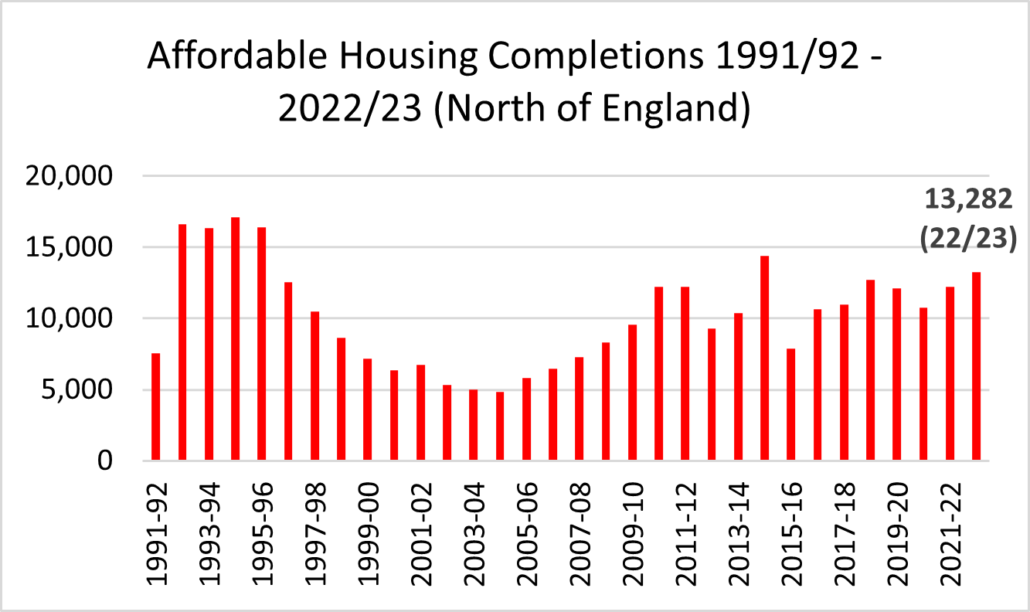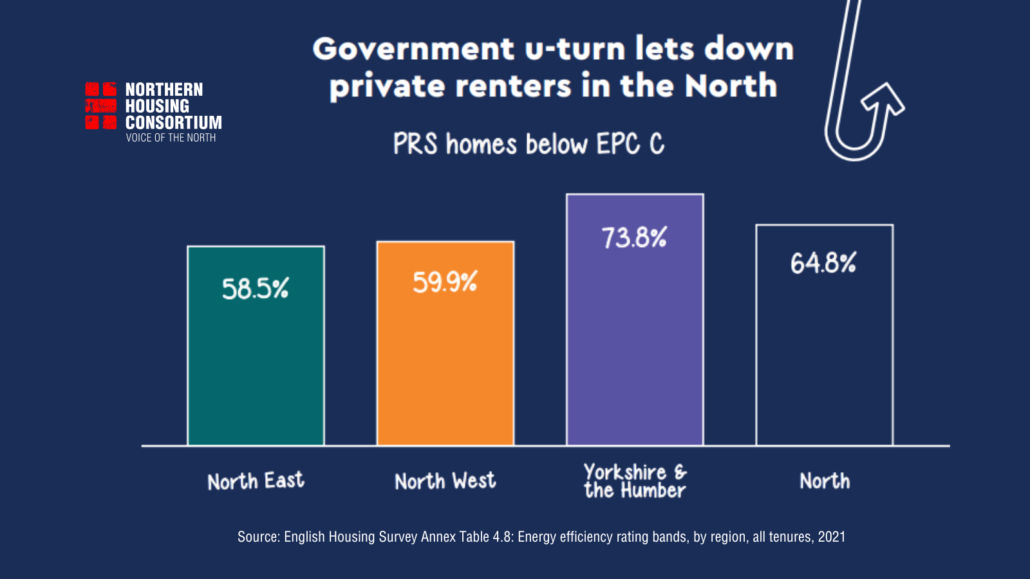Housing Strategy with Campbell Tickell – event write-up
The Northern Housing Consortium and Campbell Tickell hosted their annual Housing Strategy seminar on 29th November.
Chairs Opening
The session was chaired by Maggie Rafalowicz from Campbell Tickell, who opened the session with an introduction discussing the current context for housing strategy. The opening introduced the challenges faced by housing and what strategies will need to address. Challenges include financial pressures including high interest rates, rising homelessness, consumer regulations being introduced for local authorities and resident engagement. The chair emphasised the importance of housing as an issue, as it is central to so many other issues facing the sector.
The Balance between New Build, Regeneration and Retrofit
The first speaker was James Clark, Assistant Director of Housing, Rotherham Council. James spoke on Rotherham Council’s plans and current situation in regard to their session, including the various things that Rotherham has to balance regarding their strategy and how they plan to address challenges.
James began the session by explaining to the session the dynamics of Rotherham and explaining to the group a little bit about how they have managed to build 500 new homes. This includes working with developers in more rural areas where the council has found it difficult to build previously. James also spoke about the difficulties that Rotherham is facing, such as affordable housing in rural areas. However, there was successes highlighted with James demonstrating to the group the houses that they have managed to build in the areas around the town centre.
The group was shown some of Rotherham’s policies around housebuilding to tackle problems around cost, the small site homebuilding initiative and the housing acquisitions policy, which was mentioned to the group as a way of trying to do “more for less”. James also talked to the group around energy efficiency and the challenges of doing this alongside other work and the costs associated with it. Finally, James spoke about the lessons learned from the Social Housing Decarbonisation Fundm including the importance of resident engagement and how there needs to be plans put in place for retrofit including investment plans and strategies.
Strategy from a Rural Perspective
John Burroughs, Housing Strategy and Development Officer at the new North Yorkshire Council was next to speak. Having brought his experience from working in Scarborough. John started the session by talking about the new local authority and some of the dynamics, explaining that it is the largest authority in England and Wales by square kilometre with a population of 620,000. In North Yorkshire, 65% of residents live in an urban area but around 35% live in a sparse area, with 17% living in a super-sparse area.
John spoke around the issue of affordability in North Yorkshire, with house prices being averaged around £284,000 in an area of low income and higher energy prices and transport costs. Included in this is the fact that the population of rural areas is aging, with people moving away due to loss of rural services.
John then moved onto the issue of holiday lets. In North Yorkshire there are around 8,00 holiday lets and around 8,200 second homes, which is around 6% housing stock. This gets even greater as you get to the coast, with some villages having excess of 50% of stock being either holiday lets or second homes. This is a major issue as it reduces supply, which increases rents and house prices, greatly increasing the risk of homelessness. John also spoke about the challenges to develop in rural areas, such as higher costs to develop on rural land.
Discussing how they planned to meet these challenges, John talked about the rural housing crisis being a key priority in their new strategy. John also discussed working with key partners such as the Mayoral Combined Authority and Homes England to develop an enhanced rural affordable housing supply pipeline, and sufficient investment. North Yorkshire Council has already had some successes, such as the delivery of community-led housing schemes in rural areas using Community Housing Funds.
Consumer Standards and Partnership at the Local Level
The next part of the session included two speakers from different organisations; Ceri Victory-Rowe, Director, Campbell Tickell and Mandy Sawyer, Head of Housing and Neighbourhood Services, Leeds City Council.
Ceri began this section by discussing the Regulator of Social Housing’s (RSH) consumer standards and what they mean for local authorities. Ceri first mentioned what had been in the consumer standards up to this point, including the different standards around Home, Tenancy, Neighbourhood and Community and Tenant Involvement and Empowerment. Following this there was a discussion around the new consumer standards and what they include. Included in this, stock quality has been a key part of the new standards, meaning that local authorities and housing associations need to have an accurate, up-to-date and evidenced understanding on the condition of their homes which must inform their provision of good quality. Ultimately, these new standards will mean that councillors will be responsible for ensuring the local authorities compliance. These standards will be in effect from April 2024.
Mandy then discussed the housing strategy from Leeds City Council and how new regulations can apply going forward. Mandy presented Leeds’s housing vision, with sought to meet the city’s housing needs whilst also providing good quality homes that are affordable. Another key part of this vision is ensuring that there is appropriate support for those who need it, which includes reducing inequalities, care integration and age and child friendly housing. Mandy ended the discussion with a section around how social housing regulation will impact the strategy, with the key takeaway being the requirement for more collaboration between the local authority and the registered provider, especially on key issue areas such as anti-social behaviour and homelessness.


